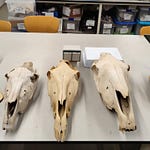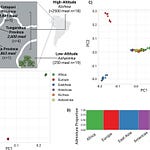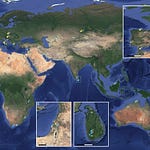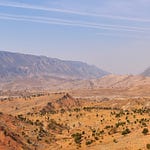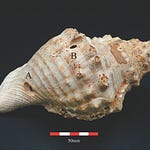How Khorramabad Valley Became a Window on Paleolithic Life
Deep within Iran’s rugged Zagros Mountains lies a stretch of karst landscape—scatterings of caves and shelters—that has witnessed human presence spanning from Neanderthals to Bronze Age pastoralists. On July 11, 2025, UNESCO formalized the global importance of this record by inscribing five of these sites—the Khorramabad Valley Prehistoric Sites—on its World Heritage List.
These five locations—Yafteh, Ghamari, Kunji, Gilvaran, and Gar Arjeneh—together offer an almost unbroken cultural archive that tracks human survival, innovation, and symbolic expression from at least 60,000 years ago.
A Tapestry of Human Evolution

From earliest chipped tools to later symbolic artifacts, these shelters capture chapters in humankind’s story. At Yafteh Cave, excavations have revealed shell beads, perforated deer teeth, and ochre pendants tied to the Baradostian tradition—which speaks to early European–style cultural influences entering the region around 40,000 years ago.
Ghamari Cave shows both Middle Paleolithic layers with Neanderthal tools and upper levels linked to Chalcolithic herders—revealing millennia of shifting lifeways. Kunji, with an archaeological history stretching back to 1969, preserves a long-lived sequence of occupation—knife flakes, hearths, burials—demonstrating the gradual shift toward settlement.
Each site contributes to a holistic narrative of adaptive behavior, technological progress, and cultural complexity—documenting hominin occupations, ecological resilience, and encounters between Homo sapiens and Neanderthals.

From Fieldwork to Global Recognition
Decades of fieldwork by Iranian and international teams—including figures like John D. Speth and Sonia Shidrang—converged in a UNESCO dossier that highlighted these caves' Outstanding Universal Value.
"The caves at Khorramabad preserve one of the most intriguing records of how Homo sapiens dispersed into Eurasia and interacted with Neanderthals and other archaic human species."
Shidrang's research at Yafteh, which notably redefined the Baradostian with items of ritual and adornment, proved decisive in demonstrating early symbolic mindsets in the region.
Legacy Carved in Stone
When UNESCO recognized Khorramabad, it completed a mapping of the Paleolithic global narrative—joining other honored sites like France’s Vézère Valley, Spain’s Altamira, China’s Zhoukoudian, and India’s Bhimbetka. This brought overdue attention to Iran’s role in human prehistory.
Ata Hasanpour, spokesperson for Lorestan’s cultural heritage authority, described the inscription as a milestone that shows Iran is
“home to caves and rock shelters that inform us about 60,000 years of human activity.
What Lies Ahead
By bringing Khorramabad into the UNESCO fold, the international archaeological community has opened new avenues for further investigation. Future studies will explore climate change’s impact on occupation shifts, fresh excavations will seek symbolic and genetic evidence, and research can now better connect Zagros living patterns with Neanderthal–Homo sapiens interactions.
Related Research
Shidrang, S. (2024). Symbolic behavior and the Baradostian record: shell beads and ochre at Yafteh. Journal of Near Eastern Archaeology, 78(2), 123–145. doi:10.1007/s12520-024-0117-8
Speth, J. D. (1990). The Kunji Excavations in the Zagros: Patterns of Prehistoric Movement. Iranian Archaeological Reports, 12, 45–68.
Biglari, F., & Shidrang, S. (2021). Neanderthals and early modern humans in Ghamari Cave. Quaternary International, 565, 1–19. doi:10.1016/j.quaint.2020.07.019





